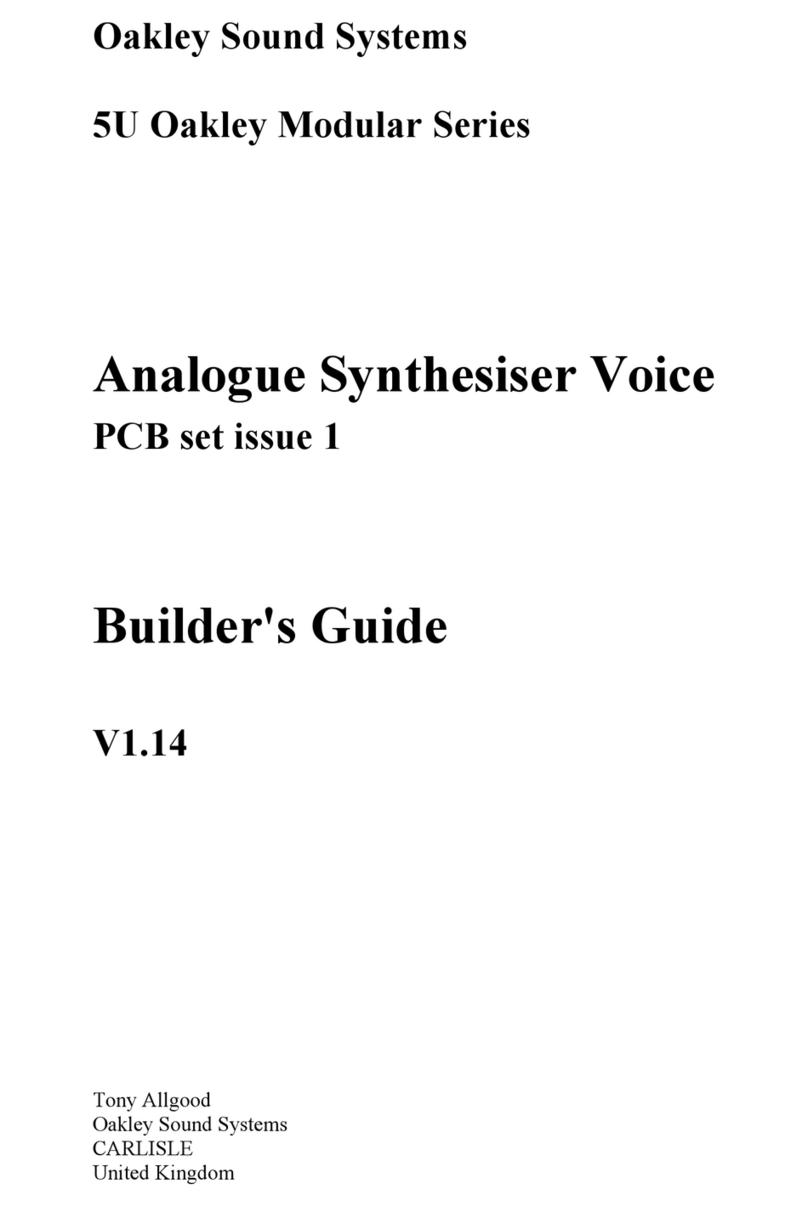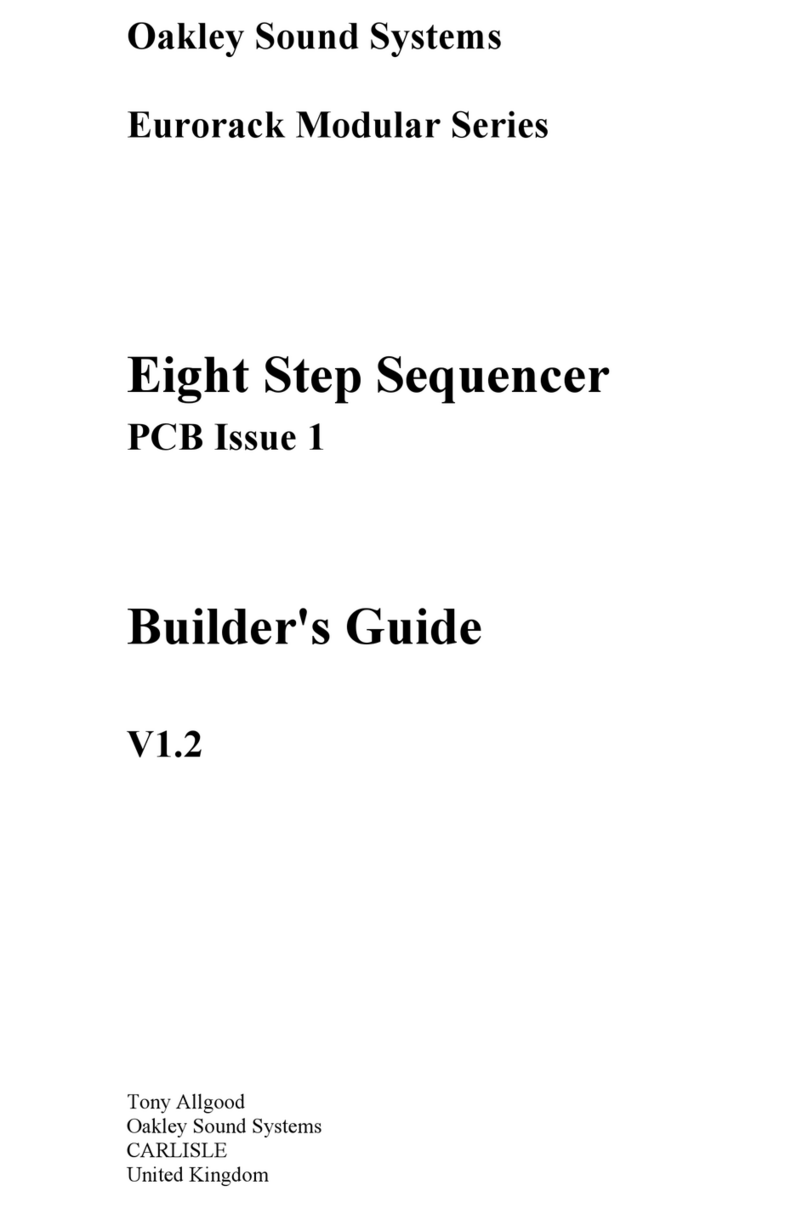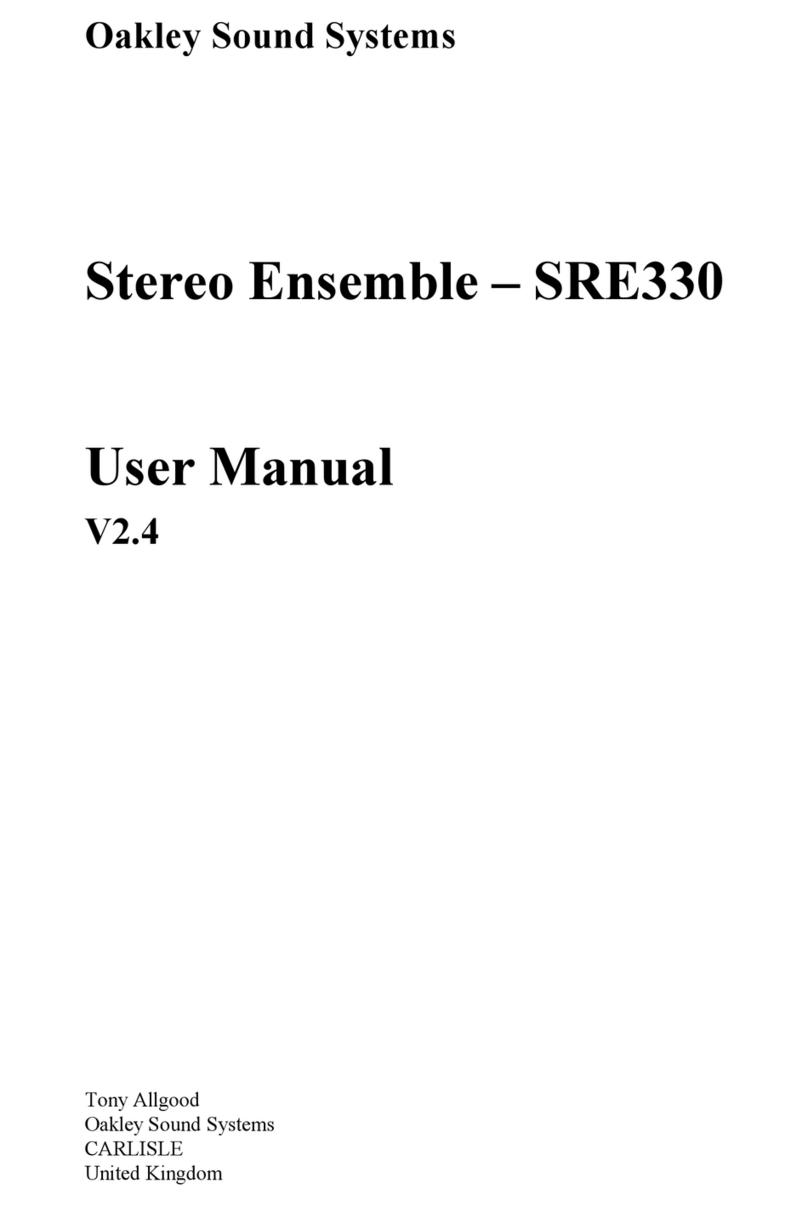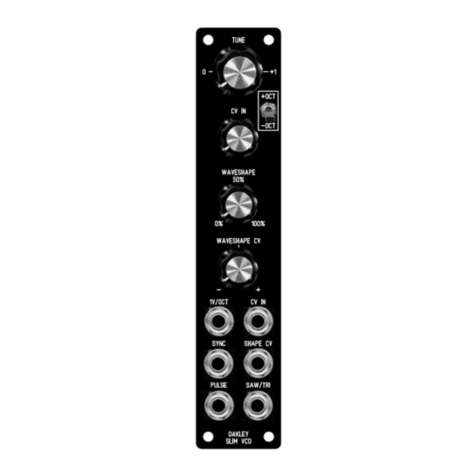Also available are two octave switc es. T ese affect t e two keyboard control voltage (KCV)
outputs of t e module individually. T is eac VCO, or VCO bank, can be raised or lowered by
one octave at a flick of a switc . Eac KCV output uses a low impedance cable driver to
ensure no droops wit long signal runs and multiple loading.
Alt oug t is module was designed to work wit t e Oakley buss, w ic pipes around KCV
and gate signals around your modular, t e input and output sockets on t is module can be
assigned different purposes so as to suit individual requirements.
VCA control input is optionally low pass filtered so as to reduce stepping artefacts from midi
generated CVs. T is low pass filtered output is available via t e VCA CV OUT socket so you
can use it to control ot er modules.
T e internal LFO outputs are available individually from t e front panel as bot sine wave (+/-
5V) and square wave (+5V, 0V).
More about t e Oakley Buss and Module Normalisation
T e Oakley buss is a t ree way connector found on various modules. Pin 1 carries t e
keyboard CV (note control) and pin 3 carries gate (note on or off). T e VCO Controller
module taps into t e Oakley buss and creates two new busses for eac VCO bank. It also as
a buss t roug feature for easy wiring
T e word buss is per aps a little grand for somet ing t at as just two control lines and a
single ground. However, it still ad eres to t e principle of a common set of conductors t at is
available to all modules.
Normalising is t e process by w ic some signal pat s are already made for you. In ot er
words no patc leads are needed to make t ose connections; t ey are connected internally
eit er wit in t e module or between different modules but be ind t e faceplates. However,
normalising can always be overridden by t e user. T e name itself comes from t e use of
normalised connections on sockets. W en a socket does not ave a jack inserted it is in its
normal position. T ere is often a connection between t e signal lug of t e socket and an extra
contact called t e NC (normally closed) lug. It is t is t ird lug on t e socket t at is used for
t e normalisation. Inserting a jack plug will break t e connection between t e NC and t e
signal lug.
To elp us understand w ere normalisation is useful consider a VCO wit a 1V/octave socket
on its front panel. It is most likely to be used to for a keyboard control voltage (KCV). To
connect KCV to t is socket one would ordinarily need a patc lead. But imagine a system
w ere you ave four VCOs and two VCFs t at all need t e same KCV signal. It can take
many patc leads to do t is; seven if you ave a large multiple panel. Now suppose t at t e
NC lug of every 1V/octave socket is connected to a common KCV bus. All six modules can
now be driven wit out t e need for t ose seven patc leads. T is saves you leads, time, and
also gives you a better working environment because you don’t ave to fig t your way
t roug a tangle of leads to get to t e module’s knobs. Inserting a jack into one of t ose
sockets would disconnect it from t e KCV bus, so you still ave complete modularity.
4


































